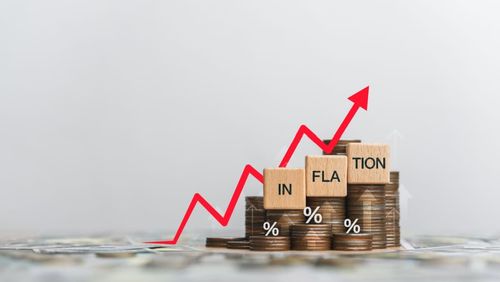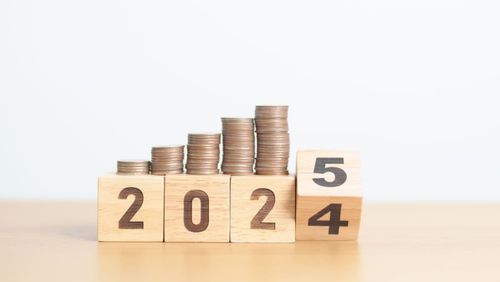European stock markets firmed up on Tuesday morning following a choppy session on Wall Street that left the major US indices lower for the session. Asian equities managed to make gains and US futures are a little higher this morning. Oil has risen as the G7 proposed new sanctions on Russian fossil fuels and the US Strategic Petroleum Reserve fell to its lowest since 1986. Ten-year Treasury yields are higher at 3.22% this morning. Watch for central bank speakers today with the Sintra conference in full swing, plus Nato is set to detail how it will beef up its Eastern flank as leaders meet in Madrid today. It will also label China a ‘challenge’ as part of its new 10-year security doctrine that will increase rapid reaction forces on its Eastern flank to 300,000 from 40,000.
Reports this morning indicate the G7 has agreed a deal to cap Russian oil prices…hard to see this do anything other than further tighten supply and create a black market. Brent crude futures this morning trade above $112, whilst WTI is near $111. A flash report this morning said the deal was agreed ‘overcoming obstructions caused by France’…the motto of many an international organisation no doubt. President Macron was caught on camera telling President Joe Biden about a call he’d just had with ‘MBZ’ – leader of the United Arab Emirates, Sheikh Mohammed bin Zayed al-Nahyan. “He told me two things,” said Macron in front of journalists. “One, I’m at a maximum, maximum [production capacity] — what he claims… Second, according to MBZ, the Saudis can increase a little bit, by 150 [thousand barrels per day] or a little bit more, but they don’t have huge capacities at least before six months’ time.” Lots to unpick here but first to say it’s not very discreet ahead of Biden’s visit to Saudi Arabia. Plus it’s wrong. What’s he quoting is based on their quotas for shared production cuts. Saudi Arabia does have more capacity – “the blind leading the blind and when it comes to understanding oil policy”, as Energy Intel’s Amena Bakr points out. Macron also wanted Venezuelan and Iranian oil back on the market, something the US was never going to agree to.
OPEC convenes this week and is expected to leave production for July and August as agreed at the June meeting, but there could be a discussion on September increases. Meanwhile, supply disruptions continue in Ecuador and Libya are supporting prices/ Libya is close to a force majeure in the Gulf of Sirte within days, whilst Ecuador might suspend exports due to unrest.
As for stocks, it’s been the worst start to the year for decades for US and other global equities – when it’s that bad you shouldn’t be surprised by sharp rallies like the kind we saw on Friday when the S&P 500 enjoyed its best day since May 2020. Not the kind of market you would be terribly confident to take a long-term position as all the reasons why it’s a bear market are still evident. Lack of follow-through from Friday’s sharp bounce shows investors are still very cautious about this market. But…inflation expectations are showing signs of rolling over – past peak fear? PCE data this week will be important for the near-term direction, but still think earnings are going to be worse than expected and this could be the next catalyst for a leg lower.
Durable goods were up more than expected…indicates robust demand but still growth is slowing and will likely decline as higher energy prices weigh on business investment. Morgan Stanley: “Falling yields and lower oil prices have lowered the terminal rate for the Fed… Last week, the market took the bullish view which may last a few more weeks before the reality of lower earnings arrives and the bear market resumes.”
Whilst durable goods held up, the Dallas Fed manufacturing survey sank to its weakest since May 2020. The index dropped to -17.7 as new Orders fell into negative territory and employment weakened. The outlook uncertainty index shot up to 43.7, a 17-point jump from May.
Some choice comments from survey respondents about the Biden administration and the Fed:
- We’ll all be lucky to have a job with two more years of this disaster.
- You can’t ignore the economic fundamentals leading to a likely recession, and the administration [in Washington] is either stubborn or as paralyzed as a deer in headlights. The Federal Reserve is slow to react and will have to hit the brakes harder than they should have had to do.
- The supply chain is a nightmare, while prices are increasing. It’s difficult to find employees, and the ones we can find are expecting more pay.
The Atlanta Fed’s GDPNow model estimate for real GDP growth in the second quarter of 2022 ticked back up to 0.3 percent on June 27, up from 0.0 percent on June 16th. This still leaves plenty of margin for error for a technical recession.
Meanwhile, German consumer confidence plunged to a record low in June after a brief respite in May. Consumer sentiment continued its downward spiral to –27.4, the lowest since records began in 1991. “Consumers continue to see a significant risk of the German economy slipping into recession,” GfK said. “Supply chain problems and the war in Ukraine are currently hindering production in Germany. In addition, private consumption, which is an important pillar of economic growth, is threatening to slump due to the high level of inflation.”
ECB’s Kazaks (hawk) said the base case for the central bank is to hike by 25bps and 50bps in September, as the latest statement indicated was the case. However, he said it would be worth looking at 50bps in July…unlikely that the ECB would do anything to diverge from what they have set out – they have not been in a rush to tighten and show little inclination to change. Speaking this morning ECB chief Christine Lagarde reaffirmed the June statement – 25bps in July and larger in September if needed.
As noted on Jun 10th: “The notes from the ECB said that ‘If the medium-term inflation outlook persists or deteriorates; a larger increment will be appropriate at the September meeting’. Clarifying this later, Christine Lagarde said this would mean the 2024 inflation projection remaining at 2.1% or worse. I find it impossible to believe that this will improve, so I’d suggest that 50bps is looking very likely for September.”
Lagarde this morning has not suggested any different. However, she did say: “There are conditions where gradualism would NOT be appropriate: If we were to see higher inflation threatening to de-anchor inflation expectations or signs of more permanent loss of economic potential – we would need to withdraw accommodation more promptly”.
Nike earnings topped estimates on the top and bottom line despite lockdowns in China, supply chain problems and rising costs. Sales in North America declined 5%, though this was not nearly as bad as the 19% fall in Greater China. The CFO pointed out that declines are due to transitory factors – Nike as a brand is not diminished as such. Nevertheless, shares declined almost 3% after-hours, extending the 2% drop in the normal session.
ARKK update – Bloomberg says $639m flowed into the fund over a period of eight straight days – the best inflows since March 2021 shortly the ETF peaked….the bottom isn’t in.
Finally, the Bank for International Settlements (BIS) has warned that the world is on the cusp of a ‘paradigm shift’ in the inflation regime…more on this in the coming days.








